Brazil GP conclusions: Key Norris change, Max’s big fight, latest Piastri SOS, new Ferrari solution

Does Lando Norris have one hand on the 2025 title?
McLaren driver Lando Norris claimed his seventh victory of the F1 2025 season in the Brazilian Grand Prix at the Interlagos circuit in Sao Paulo.
Norris dominated from pole position to take a huge step closer to the F1 2025 title with Mercedes’ Andrea Kimi Antonelli second and Red Bull’s Max Verstappen recovering to third from a pit-lane start. Here are our conclusions from Interlagos…
Lando Norris is starting to look like the new world champion
There comes a point in a racing driver’s career when, oozing such pace and confidence, he starts to have the look and feel of a world champion.
For Max Verstappen, that moment came at the Dutch Grand Prix in 2021.
Max has, at the risk of stating the obvious, collected more accomplished victories before and since that afternoon.
But it was the mature way he handled the level of expectation that came with his first-ever home race, at such a delicately poised point of his maiden title-winning season, that really stood out at Zandvoort.
If he could cope with this, he could cope with anything.
The same was true of Lewis Hamilton in 2008.
Many will point to his triumph in the rain at Silverstone that season as evidence of his irresistible talent.
Yet it was his ice-cold victory at the penultimate race in China – not just winning but dominating at the place where it all went wrong the previous season and just as the nerves were starting to build once more – that convinced the watching world that he had the composure to go with it too.
Lando Norris? His coming-of-age moment finally arrived on Saturday at Interlagos.
Lando Norris vs Oscar Piastri: McLaren head-to-head scores for F1 2025
👉 F1 2025: Head-to-head qualifying statistics between team-mates
👉 F1 2025: Head-to-head race statistics between team-mates
Up until now it had been one of the themes of this season that Norris would start a weekend as clearly the faster McLaren driver, only to blow it in the decisive laps in Q3 and hand the initiative to Oscar Piastri.
Take Saudi Arabia and Canada, both rounds where Lando was quicker than Oscar in all three practice sessions, and in Q1/Q2, before making a mess of Q3.
Having dominated the first half of the weekend here too, it appeared to be happening all over again in Brazil, where a Norris mistake into Turn 1 left him bottom of the times and Piastri on provisional pole after the first runs of Q3.
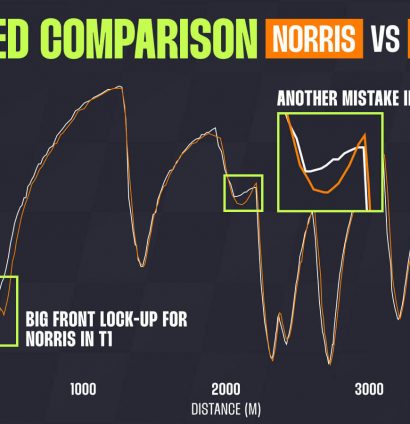
Then Lando took a breath, pulled down his visor once more and, without a delta time on his steering wheel to tell him where he stood, just focused on the simple act of driving the lap.
The result? A purple second sector. A purple final sector. And…
Pole.
Take that, Oscar.
No gifts this time. Cometh the hour, the man did not go missing on this occasion.
There was a grittiness – a poise – about that pole lap few have typically associated with Norris and to watch it unfold, corner by corner, was to witness a racing driver shedding his skin.
Gone, right there, was the Cuddly Little Lando character of old – the fast-yet-flawed overgrown adolescent, riddled with self-doubt and prone to imploding under pressure – to be replaced by the first little glimpse of what Lando Norris as world champion might look like.
Tougher and more resilient, yes, but most importantly at ease with himself and his own abilities. More complete. Better placed to respond to moments of adversity.
Does this mean he’s ready now? He’s as ready as he’ll ever be.
Recap: How the F1 2025 title race has developed
👉 Mexican GP conclusions: Big Norris chance, Verstappen illusion, new Hamilton document incoming
👉 US GP conclusions: Verstappen’s big chance, more Piastri evidence, Ferrari culture clash
There was a good reason why, as soon as it became clear that McLaren’s late-2024 advantage would be carried into this season, Norris was widely regarded as the favourite for the 2025 title.
The assumption was that his peaks of last year – Zandvoort, Singapore, Abu Dhabi – would be more regularly accessible with a dominant car.
It hasn’t worked out that way for a variety of reasons, not just related to the car (Norris initially lacked feel for the front of the MCL39 after McLaren moved its steering arm further forward for 2025) but also his own self-defeating habit of too often getting in his own way.
Yet now?
Now everything has finally fallen into place. Now everything has clicked at just the right time.
And now he is achieving the sort of consistent excellence his competitors feared he would in 2025.
Feel that? That’s world champion material.
Max Verstappen is going down fighting
It’s true what they say, you know: it’s the hope that kills you.
Only a few months ago it seemed Max Verstappen had made peace with the thought of losing his world championship at the end of 2025.
His general demeanour during that miserable series of midsummer races between Austria and Hungary? Somewhere between acceptance, resignation and surrender.
Nobody can win everything all of the time, he would often say. And anyway, I’ve had a pretty good run…
It is a great credit to Max and Red Bull, then, and the resistance they have shown in the face of McLaren dominance in 2025, that the pain of his Q1 exit was felt so acutely on Saturday in Brazil.
As recently as the Dutch Grand Prix at the end of August – just six races ago, if you please – nobody remotely thought of Verstappen as a serious contender for this year’s title.
Yet there was Jos making a swift exit from the Red Bull garage, looking as if his world had just come crashing down, as his son qualified 16th.

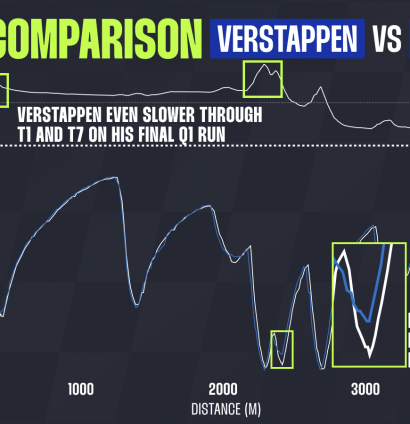

And there was Max, left to wonder how the RB21 could feel so bad again – the leading theory being that the rear ride height had to be run higher than usual due to the particular demands of Interlagos, taking the car out of its operating window – having convinced himself that Red Bull had finally cracked it.
If, as seems almost inevitable now, Lando Norris does seal a maiden world championship in the coming weeks, Q1 in Brazil will be remembered as the moment Verstappen’s reign effectively came to an end.
What followed on Sunday was Max and Red Bull raging against the dying of the light.
There was more than a touch of Michael Schumacher’s last stand at this circuit in 2006 – faced with an impending title defeat to Fernando Alonso after a disheartening qualifying result was followed by a puncture early in the race – about Verstappen on race day.
If going from the pit lane to the podium was not quite winning from 17th on the grid in the wet, it was not far off either.
Usually a result like can only be possible in the dry with some great slice of good fortune.
Yet Max, like Michael 19 years ago, was doing it purely through the sheer mighty force of his will.

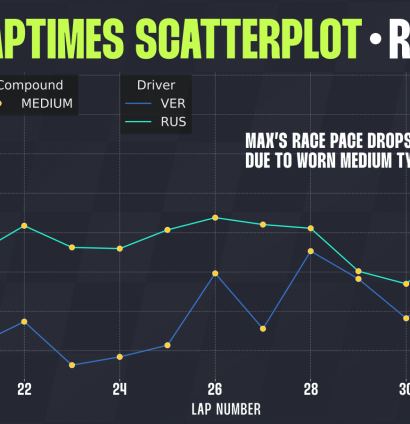



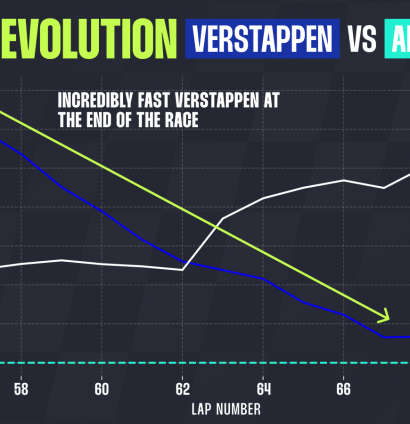




There is always something inescapably noble about the outgoing world champion producing a performance of such perfection and ferocity when staring in the face of defeat.
It somehow would not have felt quite right – or particularly on brand – had Verstappen’s (initial?) stint as world champion concluded in the submissive manner it had threatened to earlier this year.
Trailing Norris by 49 points, there is no expectation left now that Verstappen will overturn such a significant deficit across the final three races.
So Max finds himself back in the same position he started when this mini Red Bull revival began at Monza: throwing in weekly reminders that even if the world championship is destined to head elsewhere in 2025, he remains – and by some margin – the best out there.
He is going down fighting. It’s the only way he knows.
The best thing Mark Webber can say to Oscar Piastri now
Just focus on yourself.
If there is anyone in the paddock who will appreciate the wisdom behind those four little words, it is surely Mark Webber.
It was on that score, after all, that his own title challenge crumbled back in 2010.
It was Webber’s determination to keep up with Sebastian Vettel in the rain in Korea, rather than hold back and bank the points for second place, that lured him into a mistake he must still regret to this day.
Three weeks later at the title decider in Abu Dhabi, Webber and Fernando Alonso were so busy eyeing each other that they failed to recognise the threat of Vettel, the outsider whose victory brought with it the championship and left the pair of them in disbelief.
When Oscar Piastri’s late-season slump started in Baku, this column made a great deal of the role Webber – very much the Jos to Oscar’s Max – had to play in order to help his driver recover quickly.
Yet what does that mean in real terms? How can Webber possibly halt the slide?
What is it that Mark can say to stop those walls closing in?
Just focus on yourself.
For much of this season, Piastri’s use of the data has been described as a great virtue in his battle with Lando Norris.
Often Lando would establish an early pace advantage at the start of a weekend and Oscar would go away, study the data, absorb and apply the lessons to his own technique and gradually chip away at the gap across the remaining practice sessions.
Until he was right there with him – or at least close enough to capitalise when Norris tensed up – when it really mattered in Q3.
It has served him well until now, yet the last few races have perhaps revealed the shortcomings of his approach.
Take, for instance, his less eye-catching mistakes from the Brazilian Grand Prix weekend, notably those two lockups into Turn 1 on his first flying laps of sprint and main qualifying.
Irrelevant in the grand scheme of things, you might say. Certainly compared to his accident in the sprint race and his penalty for causing a collision at the safety car restart in the main event.
But potentially more instructive when it comes to establishing where exactly Piastri has been going so wrong lately.
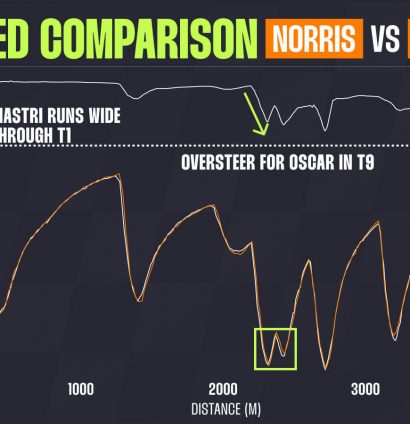



Might it be that those identical errors in SQ1 and Q1 stemmed from Oscar noticing he was losing time to Norris at that corner, seeing what Lando was doing with the steering and the brakes, trying to replicate it and finding out that it was beyond him?
If so, maybe what we are really witnessing here is the McLarenification of Oscar Piastri and the dangers of being consumed by a data-driven approach.
Just take a look at Daniel Ricciardo’s McLaren career to understand how focusing too heavily on the data can result in a gifted racing driver losing what made him such a vibrant natural talent in the first place before the team’s tentacles took hold.
Put another way, if Piastri allows himself to be moulded into a Norris clone, he will find himself merely doing what Lando does behind the wheel.
Only less naturally.
And therefore less effectively.
Hence, maybe, why Piastri is less equipped than a driver of his quality really should be to cope with the low-grip conditions he was confronted with in Austin and Mexico recently.
It is here, most of all, where Webber can make his impact felt.
Insisting that the data is used only to inform, not lead. Becoming a wedge between the driver and the team’s worst instincts.
Getting Oscar Piastri back to being Oscar Piastri – driving instinctively and without constantly thinking what Norris is doing with throttle application here and the brake pressure there – for the final three races of 2025 and beyond.
That, you suspect, is the way out of this.
In other words, Oscar, the time has come to just focus on yourself.
Andrea Kimi Antonelli’s rookie season will be remembered more fondly in time
View the results in isolation and this, by traditional standards, has been an impressive rookie season.
From 16th on the grid to fourth in the wet in Australia, even with time for a little spin along the way; very competitive compared to his experienced teammate on his first visit to the ultimate driver’s circuit at Suzuka.
Pole for the sprint race in just his sixth F1 appearance in Miami; a first podium finish in his 10th start in Canada, remaining calm under pressure as the dominant McLarens lurked behind.
And, now, two separate front-row starts in the space of 24 hours in Brazil, topped off with a career-best second-place finish for good measure after holding off the reigning four-time world champion.
If his name was, say, Oscar Piastri or Isack Hadjar, bet your bottom dollar that we would be reflecting now on one of the most accomplished debut seasons in recent memory.
But because he is Andrea Kimi Antonelli, the boy wonder of boy wonders, still there is the lingering sense that he should have done even more in 2025.
Put another way, if you tell people to expect Senna, they’re going to expect Senna.
And when he doesn’t turn out to be Senna fresh out of the box, and instead proves to be as fast and fragile, as raw and incomplete, as practically every other rookie to arrive in F1 these days, people are going to be left feeling a bit shortchanged no matter what he does.
Antonelli has a perception problem in that sense.
He has been a victim of the inflated and unrealistic expectations placed on his shoulders by Mercedes, which tried to force the unearthing of a new gem in response to the shock of losing Lewis Hamilton to Ferrari last year.
Who needs to sign Max Verstappen when you can grow your own? That was the message from Mercedes in 2024.
Yet as noted in PlanetF1.com’s conclusions from the Dutch Grand Prix, not every driver can be a Max Verstappen.
Not even if you really, really want him to be and cross all your fingers and all your toes.
And not even if you water him every day and give him lots of sunshine.
Much like Mexico’s rookie of the week, Oliver Bearman, Antonelli’s lowest points – specifically that crash-a-thon, occasionally teary European leg of the season – will prevent him from being named the rookie of the year.
Yet if he does turn out to be even half the driver Mercedes hope he is, one day we will look back on 2025 and recognise that the signs were there.
Ferrari’s latest disaster has come at a bad time for Fred Vasseur
When the rumours surrounding Fred Vasseur’s position as Ferrari team principal first surfaced in June, two potential successors were named in the Italian media.
The first, with great inevitability, was Christian Horner, who at that stage was still attached to Red Bull and, as reported at the time by PlanetF1.com, had recently turned down an approach by Ferrari.
The second was a name less familiar to those of a Formula 1 disposition: Antonello Coletta, who has spent the last few years as the head of Ferrari’s highly successful World Endurance Championship team.
How successful?
Well, the 499P hypercar remains unbeaten at the prestigious Le Mans 24 Hours since Ferrari returned to the top tier of endurance racing in 2023.
And on the day Lewis Hamilton, Ferrari’s star signing for the 2025 season, was being knocked out of Q2 in Brazil, Coletta’s team was in the process of celebrating a drivers’ and manufacturers’ title double in the WEC season finale Bahrain.
Sorry, what’s that? A Ferrari team? The class of the field? In a highly competitive category of motor racing stacked with manufacturers?
Say it ain’t so! Maybe it can be done after all…
Against the backdrop of Ferrari’s success in the WEC, the F1 team’s subsequent disaster on race day at Interlagos, which saw both Hamilton and Charles Leclerc retire by around half distance to mark the team’s second double DNF since the summer break, came at a bad time for Vasseur.
Ferrari, to its credit, has tried everything to silence the noise surrounding Vasseur and his future.
First by handing him a new multi-year contract ahead of the summer break and then by John Elkann issuing what’s known as the Dreaded Vote of Confidence – usually the kind of thing people in Elkann’s position say right before going ahead and firing the guy anyway – after the recent United States Grand Prix.
Yet the criticism of Vasseur long ago took on a weirdly personal edge and it seems some factions of the Italian media simply will not rest until he pays for Ferrari’s lacklustre season with his job.
Regardless of what Fred’s new contract might say, Ferrari team principals tend not to make it out of these situations in one piece.
And if Horner, as PlanetF1.com has previously reported, is unattainable, wouldn’t Coletta represent the ideal in-house solution by simply moving him across from his current role?
Those reports from Italy over the summer claimed that Coletta had already once turned down the job of Ferrari team principal in the past and would not be allowed to do so a second time.
Might Elkann and Co. look at what he has achieved in the WEC and allow themselves to wonder what impact he could have on Ferrari’s eternally misfiring F1 team?
You can see the logic…
Read next: Lewis Hamilton brands FIA stewards ‘complete joke’ in Brazil GP clash





